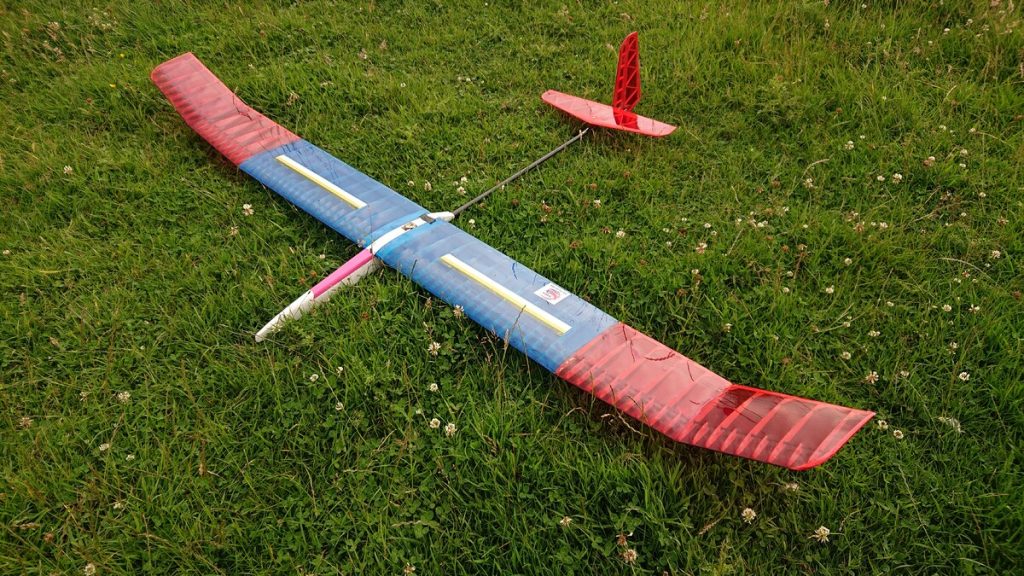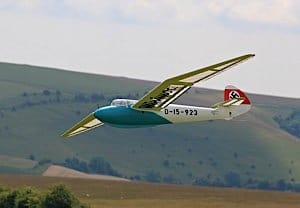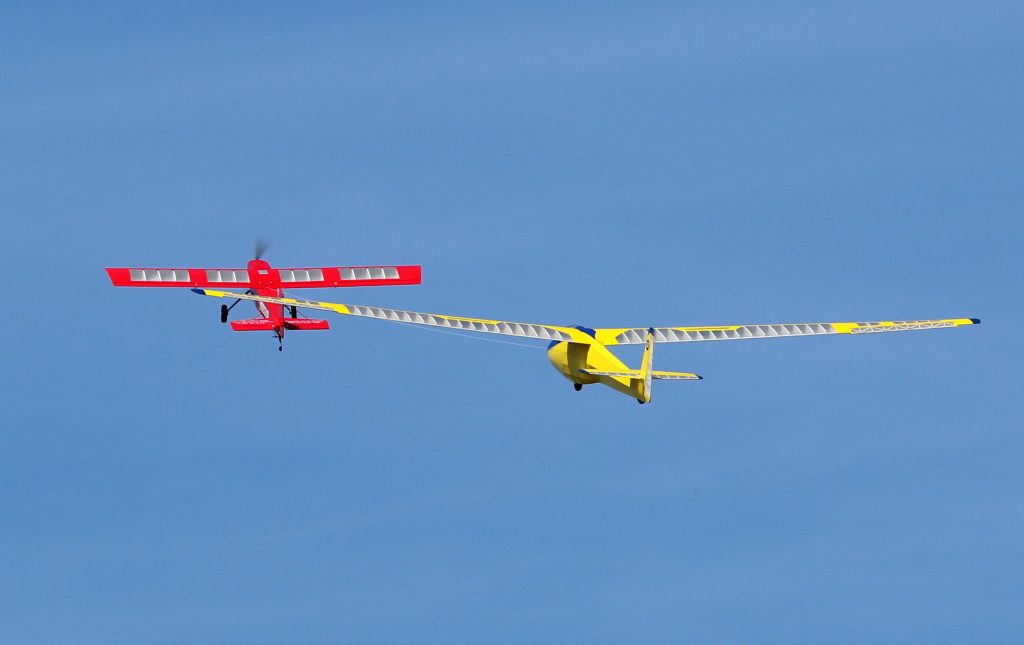A landscape in which model thermal soaring is dominated by electric gliders and discuss-launched gliders is relatively new – the produce of improvements in batteries, electronics and composite construction. Until fairly recently, most radio control gliders were towed into the air. The towline might be attached to a towman running upwind, a silicone or other elastic bungee, an electric winch or a tow-plane. All of these are alive and well in sport flying and there are some competition which use them too:
100S
The traditional mainstays of thermal soaring competition were tow-line, then winch, launched:
- Open (later F3J) models up to about 4m span, latterly aileron-equipped
- 100S – cheaper and simpler models up to about 100″ span controlled with rudder / elevator / spoiler (no ailerons).
Open / F3J competitions are no longer flown in this country. But 100S still has enthusiastic adherents and is going strong:
- Alan Morton’s Glassflight site is the key place for 100S.
F3-RES
Bungee-launched 2m gliders. A popular class in Germany and elsewhere in continental Europe, has yet to achieve the same popularity in the UK but flown (with variants) in postal competitions.
- More information on the BARCS forum
Scale
Although appearing at the end of the list here, scale models include some of the most ambitious and impressive of any model gliders. The coming of GPS Triangle (where the really big models are all scale) is now putting them centre-stage in competition soaring. But scale machines have long been popular as sports models, most frequently flown off the slope but also aero-towed from the flat. Both modern glass ships and vintage designs make spectacular models, especially at 1/4 or 1/3 scale or even larger. As well as club aero-towing, there are some splendid fly-ins.
For some great models and notifications of scale events, see
- Scale Soaring UK forum
- Ghost Squadron site.
Many thanks to Chris Williams for the great scale pictures and video.




